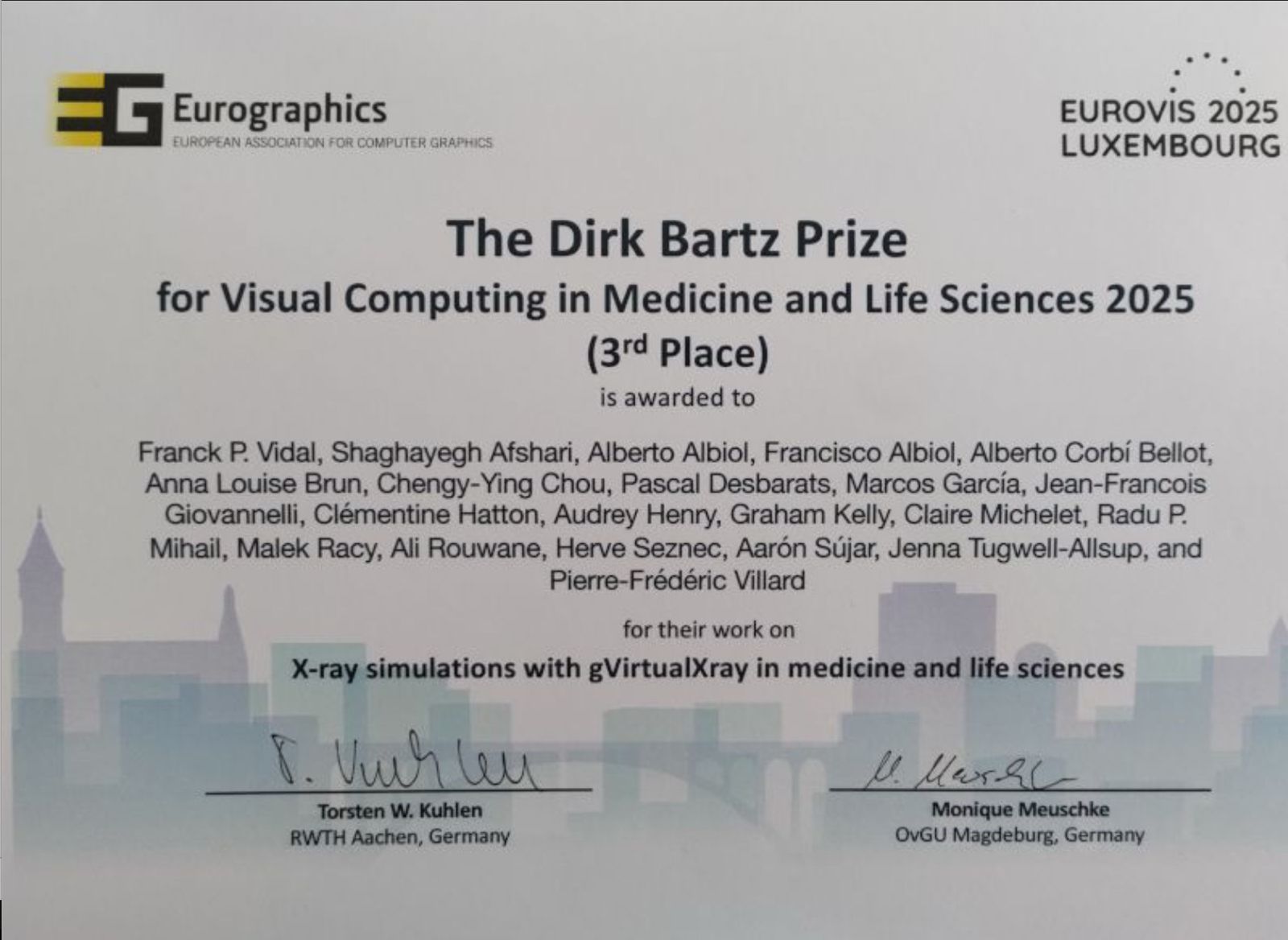The work titled “X-ray simulations with gVirtualXray in medicine and life sciences,” developed by researchers Francisco Albiol, member of the Institute of Corpuscular Physics (joint center of CSIC and the University of Valencia), Alberto Albiol, researcher at the Polytechnic University of Valencia, and Alberto Corbi, who completed his doctoral thesis at IFIC, has been honored with the third Dirk Bartz Prize 2025 during the prestigious Eurovis Conference, organized by the Eurographics Association (EA).
The award recognizes significant advances in computational visualization applied to medicine and life sciences. In this instance, the jury particularly valued the open, versatile, and innovative approach of the gVirtualXray (gVXR) tool, an open-source platform capable of simulating real-time X-ray projections using GPU technology and high-performance rasterization algorithms.
A notable strength of gVXR is its validation against Monte Carlo simulations, a widely used method in medical physics known for its high precision in modeling the behavior of X-rays passing through different tissues. These simulations use random numbers to mimic millions of possible particle paths, providing highly reliable outcomes, albeit at high computational cost. The tool developed by the awarded team achieves a balance between realism and efficiency, making it particularly useful in contexts requiring rapid and interactive responses.
Beyond its accuracy, gVXR has proven effective in educational settings as well as advanced medical physics applications, enabling students and professionals to explore complex clinical scenarios within realistic, interactive virtual environments.
Key achievements stemming from the project include international collaboration with various academic and clinical centers to validate and apply the system; development of immersive virtual reality educational applications for radiological technique training; publication of scientific articles; obtaining several patents related to using simulations for generating densitometric images and clinical applications; and technology transfer to applied innovation projects, including collaboration with the Institute of Biomechanics of Valencia (IBV) on particle detector environment recognition systems, utilizing gVXR’s capabilities as a synthetic projection generator.
“I consider it important to strengthen our community and show support for initiatives like gVirtualXRay, which help us advance and share knowledge. I am confident that in the future we can better coordinate these moments to maximize communication opportunities, especially knowing that these tools are widely used by our researchers daily and represent an additional opportunity for visibility,” said researcher Francisco Albiol.
This international recognition highlights not only the scientific and technical quality of the work but also its cross-cutting impact on sectors such as medical physics, higher education, clinical simulation, and the development of new data science tools in medical imaging.


